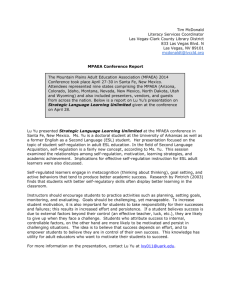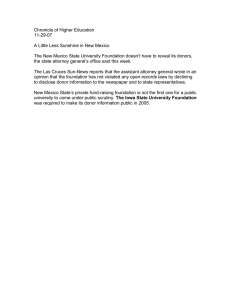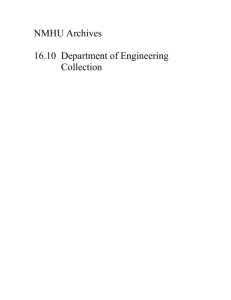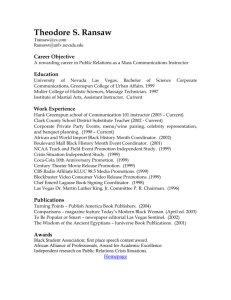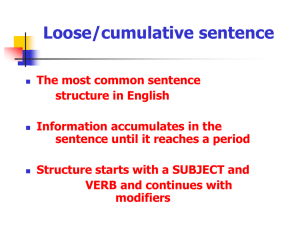The Impacts of Wildfire on Amphibian Populations in Northern
advertisement
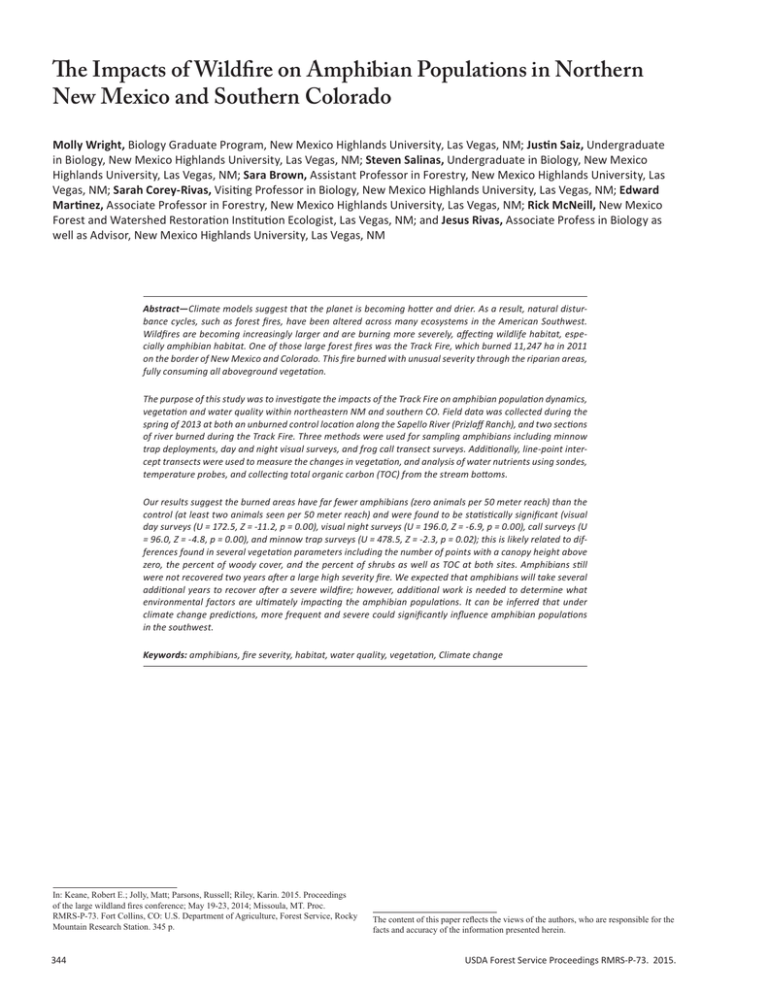
The Impacts of Wildfire on Amphibian Populations in Northern New Mexico and Southern Colorado Molly Wright, Biology Graduate Program, New Mexico Highlands University, Las Vegas, NM; Justin Saiz, Undergraduate in Biology, New Mexico Highlands University, Las Vegas, NM; Steven Salinas, Undergraduate in Biology, New Mexico Highlands University, Las Vegas, NM; Sara Brown, Assistant Professor in Forestry, New Mexico Highlands University, Las Vegas, NM; Sarah Corey-Rivas, Visiting Professor in Biology, New Mexico Highlands University, Las Vegas, NM; Edward Martinez, Associate Professor in Forestry, New Mexico Highlands University, Las Vegas, NM; Rick McNeill, New Mexico Forest and Watershed Restoration Institution Ecologist, Las Vegas, NM; and Jesus Rivas, Associate Profess in Biology as well as Advisor, New Mexico Highlands University, Las Vegas, NM Abstract—Climate models suggest that the planet is becoming hotter and drier. As a result, natural disturbance cycles, such as forest fires, have been altered across many ecosystems in the American Southwest. Wildfires are becoming increasingly larger and are burning more severely, affecting wildlife habitat, especially amphibian habitat. One of those large forest fires was the Track Fire, which burned 11,247 ha in 2011 on the border of New Mexico and Colorado. This fire burned with unusual severity through the riparian areas, fully consuming all aboveground vegetation. The purpose of this study was to investigate the impacts of the Track Fire on amphibian population dynamics, vegetation and water quality within northeastern NM and southern CO. Field data was collected during the spring of 2013 at both an unburned control location along the Sapello River (Prizlaff Ranch), and two sections of river burned during the Track Fire. Three methods were used for sampling amphibians including minnow trap deployments, day and night visual surveys, and frog call transect surveys. Additionally, line-point intercept transects were used to measure the changes in vegetation, and analysis of water nutrients using sondes, temperature probes, and collecting total organic carbon (TOC) from the stream bottoms. Our results suggest the burned areas have far fewer amphibians (zero animals per 50 meter reach) than the control (at least two animals seen per 50 meter reach) and were found to be statistically significant (visual day surveys (U = 172.5, Z = -11.2, p = 0.00), visual night surveys (U = 196.0, Z = -6.9, p = 0.00), call surveys (U = 96.0, Z = -4.8, p = 0.00), and minnow trap surveys (U = 478.5, Z = -2.3, p = 0.02); this is likely related to differences found in several vegetation parameters including the number of points with a canopy height above zero, the percent of woody cover, and the percent of shrubs as well as TOC at both sites. Amphibians still were not recovered two years after a large high severity fire. We expected that amphibians will take several additional years to recover after a severe wildfire; however, additional work is needed to determine what environmental factors are ultimately impacting the amphibian populations. It can be inferred that under climate change predictions, more frequent and severe could significantly influence amphibian populations in the southwest. Keywords: amphibians, fire severity, habitat, water quality, vegetation, Climate change In: Keane, Robert E.; Jolly, Matt; Parsons, Russell; Riley, Karin. 2015. Proceedings of the large wildland fires conference; May 19-23, 2014; Missoula, MT. Proc. RMRS-P-73. Fort Collins, CO: U.S. Department of Agriculture, Forest Service, Rocky Mountain Research Station. 345 p. 344 The content of this paper reflects the views of the authors, who are responsible for the facts and accuracy of the information presented herein. USDA Forest Service Proceedings RMRS-P-73. 2015.
